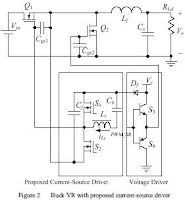My little
tutorial about controlling your lights with an
ioBridge was well received by the guys over at
ioBridge.com so I thought I would make another tutorial. This time I wanted to go over a really powerful tool
ioBridge just released, the serial smart board. The smart board allows an
iobridge to send and receive serial signals. In this tutorial I will be
suppling a serial signal from my
arduino microcontroller. Here's the video tutorial. Keep reading after the video for more details.
Let's start with the
arduino sketch. Like I said in the video, this is a really simple circuit that is probably one of the first people make. One of the best
arduino tutorials around is the one by the fine folks at
ladaya.net, and the circuit I used can be found in their
5th lesson. The only change to the sketch I used is to insert the corresponding
Serialprintln("I turned it on"); and
Serialprintln("I turned it off); Into the loops that turn the LED on and off. Since
ladaya.net covers the
arduino portion of the tutorial so well, I'll jump to the
ioBridge section.

ioBridge serial smart board
After building the circuit and programing your arduino, power down your iobridge. Plug in the serial smart board to an open channel and then power your iobridge back up. Whenever plugging in a new smart board you need to be sure to restart your iobridge so it will detect the new board.
Connect the grounds of your iobridge and arduino circuit. If you haven't done so at this time load your sketch onto the arduino board. Finally connect the TX pin (pin 1) to the RX pin on your iobridge serial smart board. If you make this connection before uploading your sketch you will probably get an error.
Head over to the iobridge.com website and log in. Click on the module tab and then select the module you plugged the serial smart board into. Change the appropriate channel to the "serial" mode and save the change.

Select serial as the mode
The iobridge will now "listen" for data. If you go ahead and press the button on your circuit the text should pop up in box just under where you selected the serial mode. If you see garbage instead of the text you are expecting, some of your settings are probably off. Make sure your baud rates are the same on the arduino and iobridge. Also make sure you have the right pacing and inversion mode set for your setup.
I'm using:
baud rate = 9600
pacing = 0
Signal mode = inverted

Channel listening for serial data
Now that everything is set up correctly go to the widgets tab and create a new widget. Select "Monitor Serial Messages (Real-time)". This is the widget you use when you want the iobridge to "read" serial data. The other two serial setting "write" serial data. Then click your module, and then select the channel you installed the serial smart board onto. Now you've got a serial monitor. As with all widgets you can copy the provided code to any webpage or just view the results from your iobridge dashboard.

Completed widget
In my video I just viewed it from the dashboard. Back in the widget's tab, click the plus next to the widget you just created to add the widget to your dashboard. Next, click on the widget dashboard. You should see your widget here. It is currently listening for data. If you push the push button then serial data will be sent from the
arduino to the
iobridge and be displayed on the dashboard.

Widget after being added to the dashboard







































